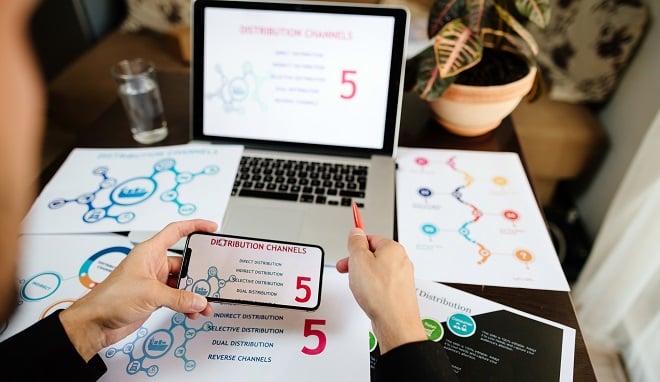Services List
Studies have shown that a staggering 70% of CRMs are not implemented correctly. This should be no surprise – HubSpot found that 22% of salespeople still don’t know what a CRM is and 40% are still using informal methods, such as spreadsheets and email programs to store customer data. With this in mind, we have created a comprehensive, easy-to-follow guide that will have you roll out and onboard your CRM dreams. 
To create the smoothest transition possible, we have compacted our combined industry experience into this simple guide to give you a clear overview of everything you need to consider in order to successfully implement HubSpot CRM.
Our success is based on your success, so we're going to supply you with the following tools to rock your CRM to the fullest:
A Complete Overhaul Without Dropping The Ball
A CRM won’t just affect how your sales or service agents work, but require a complete overhaul of your current processes, technology, and people.
Shape-Up Your Day-To-Day
The world won’t stop turning while you figure out how to best implement your CRM system. You need to find a way to ensure your usual business isn’t affected by ongoing changes.
Reshape Your Internal Culture
The implementation of a new CRM system is often an opportunity to change the company culture to become more customer-focused. You’ll need to set clear goals, be clear about how you expect people to behave, and change attitudes accordingly.
Let Data Navigate The Way Forward
A CRM will enable your business to make data-driven decisions, using customer-related data to predict customer behavior, identify and prioritise new opportunities and avoid pitfalls such as defecting customers. However, the quality of those decisions is dependent on good value customer data and data being brought together from several integrated systems. With encouragement, properly utilising a CRM will help your teams to work smarter, not harder.
Table Of Content
Stage 1: Getting Started
Stage 2: Drawing Out Your Strategy
Stage 3: Design & Development
Stage 4: The Roll-Out
Stage 5: Ceaseless refinement
Stage 1: Getting Started
You will need to make sure you have the right resources in place to manage such a project. People can’t be expected to fulfill their full-time roles and manage a CRM project at the same time. It’s not possible – one or the other will suffer. Therefore, it’s likely that more people will be needed in your team.
At this stage, you should set up the project governance: a project manager, project team, steering group, executive sponsor, project controls and risk management. Just like a strong starting line-up in any team sports, your project management team will comprise of:
A day-to-day project manager
A day-to-day manager to ensure there is a clear channel of communication between all department heads and the project team, manage and track the project plan, make sure that the right things are done at the right time by the right person.
An executive sponsor
A senior-level (Exec team or Board-level) sponsor will be needed to ensure the project gets the right support. Without sufficient financial, strategic and project support from all major partners within your company, your project will face unnecessary hurdles.
A project team
A project team, typically made of department heads (e.g. IT, Data, Sales, Marketing, Service, HR). These roles will give clear guidance to sub-teams throughout on how to progress.
A steering group
A steering group, including key figures from all departments, define the journeys each sub-team needs to make to change the user experience.
Stakeholder communications plan
One of the first priorities for your project team and steering group, beyond setting project objectives (see below), will be to understand the stakeholders that are impacted by the project and to build a communication plan to engage them. This communication plan needs to define what messages need to be sent to specific stakeholder groups, and when, in order to ensure that all those impacted by the change are properly informed throughout.
On top of these key figures within your team, you will also need to establish a rhythm of project meetings and reviews amongst the project team and steering group to ensure proper communication within the team. Schedule regular meetings at least once a month to assess how your project is going.
When discussing your strategy, it’s key to meet their needs, so engage with their specialist area to increase their interest in your project. Involve them in your process by giving them a say in how they think you should implement your CRM strategy in low-risk areas.
Stage 1 Checklist
The output of this stage should be a project charter that should include the following things:
- Project objectives and financial targets.
- Executive sponsor.
- Steering group members.
- Project team members and organisation chart.
- Intended timelines (milestones).
- Budget (cost for the program).
- Benefits case.
- Scope – what’s in scope and what’s out of scope?
- Risks – what could go wrong and how to mitigate against those risks?
Stage 2: Drawing Out Your Strategy
The purpose of this stage of the project is to understand your current situation (the ‘As Is’), define objectives for improvement and to develop a view of what changes need to be made to achieve those objectives (the strategy for change). As the foundation of any good project, understanding your current situation is vital to helping you figure out what you need to change. This should be done by performing business analysis.
In your analysis, you should evaluate your current performance, processes, systems and data in order to thoroughly understand your ‘As Is’ situation. While going through your data, consider how to:
- Increase the number of customers (e.g. manage leads better, improve the sales process);
- Decrease customer churn rates and improve the customer experience;
- Increase your opportunity to upsell;
- Reduce costs and "friction";
- Differentiate data between different customers segments.
While objectives such as “create a single view of the customer” are noble and unarguable, you need to understand what the real financial impact of the project will be.
Understanding your ‘As Is’ will become your key driver in understanding what’s working and what’s not. This analysis will help you understand what might be impacting business results and where the opportunities for improvement lie – be that substantial lead generation or customer retention or whatever else you are evaluating.
To help you develop a long-term growth strategy using your HubSpot CRM, start by asking yourself:
How well are your customer-facing teams performing?
- How many new customers have you acquired?
- How long does it take from first touch to close?
- What are your lead conversion rates, proposal rates, close rates, win rates, average deal sizes?
- Where are the bottlenecks in the sales process?
How much is it costing?
- How much do you spend per lead to convert into a deal?
- How much do you spend per order?
- What is the cost of your operations as a percentage of revenue? This covers your CRM sales and operations costs and a proportion of the revenue being delivered.
What is the quality of your customer base?
- How many customers do you have?
- What are the churn rates?
- Share of wallet?
- Is there a growth in existing customer revenue?
- What is your customer satisfaction?
- Are there any other measures of customer health (e.g. service levels, complaints)?
Your analysis will help indicate any problems your potential customers are currently facing, such as a laborious process to access basic information on your website, or a CRM that isn’t telling them the right information. Treat this as a way to learn from your ‘As Is’ situation, and see how your current strategy is (or isn’t) working for your businesses.
It’s important, to be honest with your ‘As Is’ assessment. Whether this is with your internal team or external implementation partner, ensure your future will be more successful by giving accurate results from your audit.
Rollout Approach
In addition, you will need to consider your deployment approach – that is, how you will roll out change across the organisation. There are typically three approaches to consider:
- Big Bang: This involves implementing the CRM in one go across all areas simultaneously. It follows a waterfall approach as you define, document, and delegate your requirements upfront to launch the new CRM process in one go.
- Process Areas: This approach is based on your internal pain points. You can either roll this out through marketing, then sales, and then service if you’re experiencing difficulties in the early stages of your buyer journey; or backwards through service, sales, and then marketing if it is in the latter stages of the user journey.
- Organisational Unit: This approach is based on deploying one area at a time, depending on how you are organised (e.g. by department, product area, site, country etc). It may involve developing a template that can be refined to meet the precise needs of each business area.
Stage 2 Checklist
The output of this stage should be a project charter that should include the following things:
- Created a baseline of current performance (the average level of performance that you are currently at, that you will compare future performance levels).
- Documented your ‘As Is’ state, clearly outlining any pain points (internally as well as those faced by clients and prospects).
- Defined objectives and targets for your business.
- Defined your strategy - how the objectives will be achieved (in business terms - what changes are you expecting to make and what impact do you expect them to have?).
- Defined a high level ‘To Be’ view of the changes you are planning to make.
- Developed a first cut road map – what’s the high-level plan – who needs to do what, by when?
- Clarified Next steps: Approvals, Communications plan, Project structure, Mobilisation, Quick Hits?

Stage 3: Design & Development
Having defined the strategy and road map for your implementation, you can now turn your attention to the detailed design of your solution. This is often done in iteration with implementation, but for the purpose of this guide, we’re treating the design as a stand-alone exercise.
Next, you need the right people in the right place, with the right skills to deliver the desired customer experience.
To get to grips with what you need from your team, consider the three Rs:
- Roles: What roles are needed to deliver the customer experience?
- Responsibilities: What should their responsibilities be? Do people understand what those responsibilities are, and do they have the skills needed to be successful?
- Recruitment: Do we have enough capacity in our team to meet our goals? If we need to onboard more members of staff, do we have the budget to fill the positions?
It is vital to engage with your HR team so they understand what planning is needed from them. This ensures your potential role reshuffle is successful.
Process
Once you’ve established what the customer’s journey looks like with help from workshops, you need to work out how to deliver the customer experience.
In order to achieve this, build ‘swim lanes’ for your team through your customer journey.
When considering the customer journey, think about how each department needs to interact with the customer in order to achieve their goals. Is there any overlap?
Consider the internal processes you need to follow and who is responsible for each segment of this journey. Ultimately, these swim lanes define who does what within each department, ensuring that the right roles are in place to deliver an exceptional customer experience.
This will then enable you to define processes in detail all the way through the customer journey, including lead management processes (including qualification and routing), sales processes, order closure, customer on-boarding, customer services and management processes.
Tech & Data
The primary task here is to define in detail the changes that you will need to make to HubSpot to set it up properly for the various people that will use it. This will include a specification of changes needed to:
- Setting up the data model to meet your requirements.
- Deal and ticket pipeline stages.
- Role definition, user setup and team profiles.
- Automation and workflow.
- Custom objects.
- Reports and dashboards.
You will also need to define in detail what interfaces need to be built between HubSpot and other systems you’re planning to use when creating your CRM. For example, if your business requires an Enterprise Resource Planning (ERP) tool, you need to consider whether your current system will integrate easily and effectively. This will enable you to create that cohesive journey across all your teams – sales, customer success, finance, etc.
It’s key here to ask what your stakeholders would like a report on. Find out how they personally measure ‘success’ and how they prefer to track these goals, giving you the ability to tailor your reports to them during your regularly scheduled meetings.
Stage 3 Checklist
Before you move on to stage 4, make sure you:
- Have defined your ‘To Be’ for your customers, people, processes, and technology.
- Can see any areas where your team needs any support, or where roles may be better used elsewhere.
- Have developed a ‘swim lane’ for customer processes and how each team works with one another.
- Are aware of what changes need to be made between HubSpot and any systems you’re currently using.
- Know how your stakeholders measure success and add those elements on your personalised HubSpot dashboard.

Stage 4: The Roll-Out
This next stage comes with a fair warning, make sure that you've triple-checked your to-do list for stage 2, as it has a massive impact on your roll-out plan.
Getting things wrong at this stage will seriously damage the program, creating skepticism and cynicism. This is the stage where your team needs to highly effectively work together to turn your design into a reality.
Customer
Although you might be confident your buyer persona will prefer your new way of working, you’ll need to consider one vital question – how will your real-life customer react?
While all of these alterations are being done to benefit them, will the sudden change create a jarring experience for your pre-existing clients?
A new website that’s easier to navigate, for example, might not cause customers any issues, but other changes to the customer journey, such as the process when requesting a service, may.
An easy way to introduce this to your pre-existing customers is to treat them as a stakeholder in the communications plan. Whether it’s through a blog post, video, or email. Inform them what changes to the customer journey you are going to make and when they will be enforced.
As we’ve found in stage 3, a clear process is essential. Your staff need to be informed about the processes they will be expected to follow as the CRM implementation will be introducing new ways of working.
System training will be needed, but you should also consider implementing new policies and guidelines to coincide with your new technology. These should be documented and you should update your operating procedures to reflect the changes.
Even the smallest of companies should have written policies in place to protect and guide both their workers and clients. For example, people need to be clear about what is mandatory and what is not.
In order to make sure your process works for your team, you will need to investigate every area of your business. This requires you to ask questions like:
- What is lead management’s current process for creating a new lead?
- What is the current sales process? Does it differ per deal or transaction?
- Is the current process clearly defined by role?
- What decision gates are there?
- What approval processes need to be put in place?
- How do you make sure that people sell within the rules?
- What processes do you have in place for pricing/discounting?
- What is your production handover and customer onboarding process?
- Are your customer management processes working effectively?
- How do you manage customer feedback handling? Is the current complaint handling process effective?
- What is the current account planning or renewals process?
- Are your management & reporting processes working for your team?
In order to look at every aspect of your process, go beyond this list and discover what areas you can improve for both your customer and your people. Create a process that works seamlessly for both parties.
Stage 4 Checklist
In order to make sure you're ready for the next stage in the CRM implementation process, you need you:
- Have tested your new process with your current clients.
- Are training your staff to make sure they know how to use your new system and will use it effectively.
- Have updated your policies as a result of your new CRM, and that both clients and employees are aware of these changes.
- Configure HubSpot so it meets your requirements.
- Make sure your data flows correctly through your new system.
- That at the end of this stage your new CRM is live.

Stage 5: Ceaseless Refinement
The one thing about having a CRM system that's firing on all systems is that it needs constant tinkering to ensure that it keeps running well.
Hold meetings at least every month to discuss how your HubSpot CRM data is performing, and what you need to do to improve the user journey to convert people into leads.
Ultimately, the question you need to answer is are your customers, people, processes, technology getting the support they need to create leads?
With your marketing, sales, and services divisions during monthly performance reviews find out if your CRM is working by asking:
- How many leads are we generating?
- Are the sales team then following up with potential clients?
- Are we generating enough new orders?
- Are all members of staff using the tools properly?
- Are we processing new orders efficiently and onboarding new customers?
- What feedback are we getting from the customer?
- Is our business growing?
While going through these questions, you should look at your tracking and optimisation. As your customer, people, process, and technology and data are not static, you need to adapt your tactics in order to ensure it is meeting your objectives.
Use HubSpot’s tools to track user behaviour in order to understand where customers are clicking (and what they’re not so interested in). Ensure your client data is being handled and processed correctly through your CRM.
As you continue to use your CRM, updates and improvements will be required to keep your system optimal. Here, during the initial stages of your process, decide how you’re going to handle the subsequent releases to your CRM or system as a whole. Will you need to provide continual training for your members of staff?
You may find it beneficial to perform quarterly or half-year improvements as you collect feedback on your CRM, and provide refresher training when appropriate for your employees.
RevOps
RevOps (revenue operations) helps to ensure accountability between the goals and activities of your organisation by providing synchronisation between sales, marketing, and customer service.
While the goals and tactics you use could depend based on the size of your organisation, some of the key drivers to measure a successful project are:
- Annual Recurring Revenue
- Customer Lifetime Value
- Customer Turnover Rate
- Sales Cycle Tie
- Win Rate
Strong alignment between sales, marketing and services is especially important for B2B companies, as they try to deliver a single, unified journey.
Data Analysis
As reported in the LeanData State of Revenue Operations, 95% of B2B firms agreed that the ability to provide a seamless, consistently positive experience for their customers throughout their life cycle is key to increasing revenue. As this is a key goal for all companies, sales, marketing and services need to work together to provide a singular, delightful experience.
Make sure your data is high quality, centralised, and accessible so every employee can see where they can help to improve their process. Ensure each part of your business puzzle fits correctly and is creating a smooth, continuous journey for your customers.
Stage 5 checklist
As you continue to update your CRM, in order to effectively move through the cycle you need to make sure that you:
- Are setting up a minimum of one meeting every quarter to see how your CRM is working.
- Continually train staff to make sure they’re using the CRM correctly.
- Keep in touch with valued clients to see how your process can be improved.
- Are making everyone aware of your RevOps and working to create a seamless, automated journey for your users.


-Jan-22-2024-10-56-32-2073-AM.png?width=1200&name=CRM%20System%20(1)-Jan-22-2024-10-56-32-2073-AM.png)

